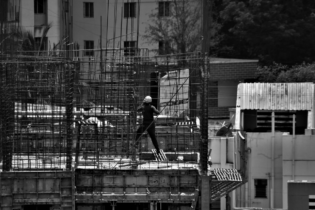With the construction industry continuing to face significant challenges, which have been exacerbated by the COVID-19 crisis, it’s vital that contractors and subcontracts pay even greater attention to the risks they assume when they enter into contracts, says Brad Boertje, a construction risk management consultant and ADR practitioner for the Master Builders Association (MBA) North.
“Too often, contractors and subcontractors don’t pay sufficient attention to the risks inherent in a specific contract, and this trend is strengthened because work is so scarce that companies just tend to sign,” he says. “Some risks cannot be avoided, but there are common risks that can be managed better, and we are urging our members and the rest of the industry to do the work. If these risks materialise, they can land a company in deep hot water and turn a potential profit into a loss.” The first risk highlighted by Boertje is inaccurate contract data. Whatever types of contracts are used, all the contract data must be accurately entered on the contract. Every contract has its own variables, such as programme access dates, insurances, security measures and the like. These details are typically issued by the quantity surveyor when inviting tenderers to submit a bid for a project or subcontract scope. “In all instances, the tenderer needs to have sight of the completed contract data before submitting a tender bid. Only the last section which is for the tenderer to complete should be left blank,” Boertje argues. “Above all, don’t let other parties complete variables which are your prerogative.” The second key risk that needs to be managed is the performance guarantee. “It’s not widely enough known that the default form of security for performance is a guarantee, not cash retention,” he says. “In my opinion, contractors should avoid cash retention for a number of good reasons.”These reasons include the fact that no interest is payable on retained cash and contractors/ subcontractors have to wait until the issue of the final completion certificate to receive their full payment. Given that the industry’s margins are so thin, a cash retention might actually mean the contractor experiences a negative cash flow throughout the whole project, something that few can weather.
And then, he adds, if the company holding the retention gets into financial difficulties, the cash retained on behalf of the contractor is likely to be lost. Boertje’s advice: insist on a variable construction guarantee whenever possible. Never forget that it’s the tenderer’s prerogative to specify the nature of the security it will provide. A final risk that can be managed more effectively with a little effort relates to a contractor’s special terms and conditions. The key point to understand here is that before any subcontractor submits a tender, it has the right to be informed about a contractor’s special terms and conditions, or special terms that the contractor has accepted from the principal. “These are ultimately all contractual risks, and as such need to be taken seriously – signing on the dotted line and hoping for the best is the pathway to ruin,” Boertje concludes. “The Master Builders Association North has a range of training and other offerings designed to help our members negotiate these areas safely and effectively, and build a sustainable business.”







